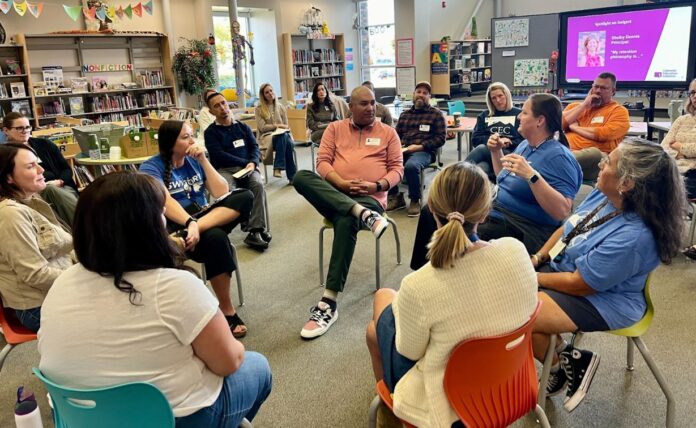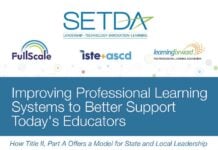We’re surrounded by intermediaries—institutions that bridge the gap between systems and people. Banks connect individuals to capital, trainers facilitate fitness goals, and real estate agents navigate complex housing markets. These intermediaries simplify complexity, creating access and opportunity across various sectors. This same dynamic applies to education, though its power is often underestimated.
The Role of Local Intermediaries
Local intermediaries serve as the vital connective tissue between policy and practice, vision and execution, and innovation and sustainability. They bring partners together, interpret strategy, and ensure change is rooted in relationships rather than just compliance. At Getting Smart and the Center for Innovation in Education, we recognize that localized, systemic change cannot be automated. It requires individuals who understand their communities—their history, relationships, and unique rhythms—and who can translate broad policy into practical, locally-grounded solutions. These intermediaries are the unsung heroes of educational change, ensuring reforms last.
The Local Advantage: Intermediaries in Action
Local intermediaries are indispensable because they’re embedded within the regions they serve. This allows them to convene partners, align systems, and cultivate ideas tailored to their unique context. Across the country, diverse organizations demonstrate that sustainable transformation happens locally, not through mandates, but through relationships and trust.
Across these examples, a pattern emerges: intermediaries thrive when they act as connectors, not controllers; when they lead by building trust and shared ownership; and often, they possess a vision for their region or state that extends beyond any single administration or era.
Navigating the Tension: Compliance and Agility
Intermediaries constantly balance competing forces. Political turnover, shifting policies, and compliance mandates can disrupt progress, even when momentum builds. However, these organizations persist by adapting to volatility and protecting promising work, while also cultivating new possibilities.
Educational Service Districts (ESDs), Boards of Cooperative Educational Services (BOCES), and Intermediate School Districts (ISDs) are designed to provide equitable, nimble support. Originating from policy rather than philanthropy, these organizations occupy a unique middle ground: possessing enough governmental authority and resources to be effective, yet regional enough to understand local needs. However, policy and funding structures can sometimes push these organizations toward compliance and oversight, which can stifle innovation.
The Integrated Model: Strategic Public Service
The most effective public agencies demonstrate that managing this compliance and innovation tension is possible. The ISD members of the Michigan FLC exemplify this. They strategically align compliance measures while investing in regional centers for professional learning and innovation, leveraging their authority to convene and scale proven innovations, supporting new practices that are embedded within the system and have access to sustainable resources. The goal is enabling organizations to be more responsive and intentional in how and where they provide support.
The most effective intermediaries blend compliance and creativity. They use public authority to create coherence while empowering schools to experiment. Take Eaton RESA in Michigan, which serves as both a compliance hub and a driver of systems change. By aligning professional learning, career readiness, and competency-based badging systems, they demonstrate how to balance stability and innovation. Similarly, Muskegon ISD has become a regional catalyst for personalized learning, consistently leveraging its role to invite, not impose, change.
These examples underscore that the future of public education will depend not on dismantling structures but on redesigning them to enable responsiveness and collaboration.
Leading by Example: Building the Practice
If intermediaries are the connective tissue, the broader ecosystem must nurture them. National and state partners have a critical role to play—not as external drivers, but as long-term partners.
This means shifting from delivering programs to partnering to advance local aims. Like other effective national organizations, Getting Smart and the Center for Innovation in Education (CIE) actively seek ways to support local intermediaries from a national perspective. Here’s how national organizations can meaningfully support local intermediaries:
- Thought Partnering and Systematizing: Working alongside intermediaries to systematize efforts, convene critical networks, and support strategic partnerships. This involves helping local leaders codify successful practices and connect them to broader systems change.
- Building a Shared Body of Evidence: Highlighting local stories and evidence of successful practice to build external legitimacy, support internal coherence, and accelerate the adoption of practitioner-led innovation. Examples from other states enhance the legitimacy of the work of other individual state intermediaries.
- Convening and Peer Learning: Building cross-state networks to support peer learning and help intermediaries become more effective in their local contexts. These networks demonstrate what’s possible when intermediaries learn together, share strategies, and support each other through political transitions and funding uncertainties.
Strengthening the Ecosystem: Three Priorities for Shared Action
Effective state education agencies already model collaborative partnerships with non-governmental organizations and regional agencies, viewing them as a strategic way to infuse the system with agility and diverse expertise. These cross-state networks, like those developed by CIE, function as critical friends and communities of practice, providing essential support.
To deepen this support, we urge the education ecosystem to commit to the following priorities:
- Fund the Practice, Not Just the Program: Invest in building the capacity within intermediary organizations—funding professional learning, cross-state peer networks, and data infrastructure—rather than only funding time-limited, top-down programs.
- Share Innovation, Don’t Impose It: National research groups should act as “learning conduits,” exposing proven, innovative strategies and helping local intermediaries adapt them to their unique regional contexts.
- Build the Bench: Invest in intermediary leaders. These organizations are only as strong as their relationships and expertise, making talent development a long-term investment in the entire ecosystem’s sustainability.
Sustaining Change: The Human Key to the Future
The long-term success of education reform hinges on building local capacity through relationships, responsiveness, and regional trust. Sustainable change requires more than just a program; it requires empowered leaders.
The power of effective intermediaries lies in their ability to integrate external expertise with local knowledge. Local solutions are not created in isolation; they often arise when new, innovative practices and strategies are effectively filtered, adapted, and owned by local leaders who understand the local ecosystem best.






















